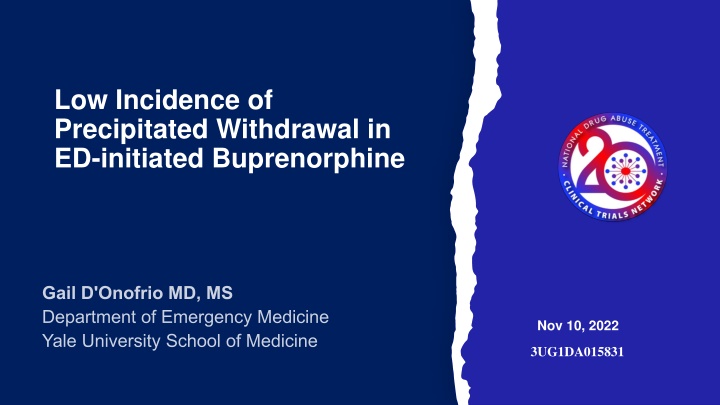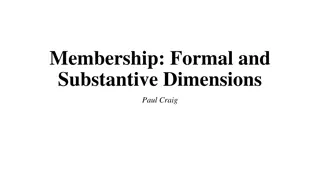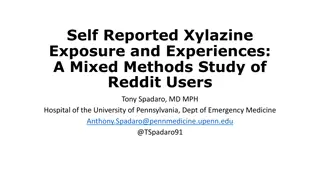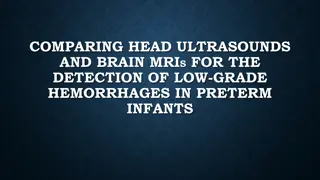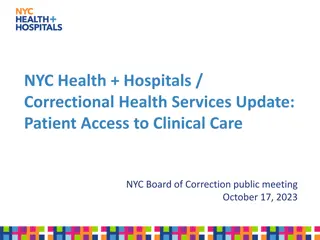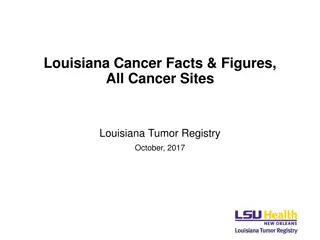Low Incidence of Precipitated Withdrawal in ED-Initiated Buprenorphine Study
In this study, researchers aim to determine the occurrence of precipitated withdrawal in an ongoing trial of emergency department (ED)-initiated buprenorphine. The study focuses on the rapid onset of withdrawal symptoms following buprenorphine administration and its impact on patients with untreated opioid use disorder. The research explores the effectiveness and implementation of different buprenorphine induction methods in a diverse ED setting, emphasizing engagement in formal addiction treatment as a primary outcome.
Download Presentation

Please find below an Image/Link to download the presentation.
The content on the website is provided AS IS for your information and personal use only. It may not be sold, licensed, or shared on other websites without obtaining consent from the author.If you encounter any issues during the download, it is possible that the publisher has removed the file from their server.
You are allowed to download the files provided on this website for personal or commercial use, subject to the condition that they are used lawfully. All files are the property of their respective owners.
The content on the website is provided AS IS for your information and personal use only. It may not be sold, licensed, or shared on other websites without obtaining consent from the author.
E N D
Presentation Transcript
Low Incidence of Precipitated Withdrawal in ED-initiated Buprenorphine Nov 10, 2022 3UG1DA015831
Disclosure Statement No disclosures except funding sources.
Background Evolution of Drivers of Overdose Deaths, All Ages Analgesics Heroin Fentanyl Stimulants 80,000 Primarily Fentanyl 70,420 +24.4% 70,000 106,854 Overdose Deaths from all Drugs 60,000 Stimulants (predominantly cocaine and meth) 56,384 +36.0% 50,000 Anecdotal and limited reports cite concerns regarding precipitated withdrawal with standard buprenorphine induction among those using fentanyl 40,000 30,000 20,000 Prescribed Opioids 13,643 10,000 Heroin 9,504 0 12 months ending 11/21 *NCHS Provisional drug-involved overdose death counts are PREDICTED VALUES, 12 months ending in select months. https://www.cdc.gov/nchs/nvss/vsrr/drug-overdose-data.htm
Precipitated Withdrawal Rapid onset of withdrawal symptoms within 1-hour of administration of buprenorphine (described for SL-BUP) Assessment is based on rapidity of onset of withdrawal symptoms and clinical factors, similar to when a patient receives full naloxone rescue. COWS scores reflect this rapid deterioration and skyrocket to moderate/severe levels. (e.g., timing since last use, duration and use of opioid agonist(s)) Rosado, Alcohol Depend 2007;90(2-3):261-269 https://doi.org/10.1016/j.drugalcdep.2007.04.006 Comer S, et al. National practice guideline for the use of medications in the treatment of addiction involving opioid use. American Society for Addiction Medicine. 2015;66.
Objective To determine the incidence of PW in an ongoing trial of ED-initiated buprenorphine
ED INNOVATION ED-INitiated BupreNOrphine VAlidaTION Network Trial Hybrid Type 1 Effectiveness-Implementation Design Implementation To use implementation facilitation and training to achieve competence in ED-initiated XR-BUP and SL-BUP inductions in approximately 30 diverse ED sites Effectiveness To compare the effectiveness of XR-BUP and SL-BUP induction in approximately 2000 patients with untreated OUD in the ED on the primary outcome of engagement in formal addiction treatment at 7 days D'Onofrio, Contemporary Clinical Trials, 2021
ED INNOVATION CAM2038 24mg XR-BUP 7-day injectable vs 16mg SL-BUP per day Pharmacokinetics of XR- & SL- Buprenorphine Upon injection CAM2038 forms into a viscous liquid crystalline gel, producing a sustained, non- fluctuating levels of buprenorphine in the blood avoiding the peaks and troughs of daily dosing 3UG1DA015831
Patient Eligibility Exclusion Inclusion Urine toxicology positive for methadone Pregnancy Medical/psychiatric condition that requires hospitalization or opioid administration at the index ED visit, prior to randomization Actively suicidal or severely cognitively impaired Require continued prescription opioids for pain A prisoner or in police custody at the time of index ED visit Enrolled in formal addiction treatment (anytime within the past 14 days) including by court order. Patients enrolled in formal addiction who are not receiving MOUD are eligible 18 years or older Meet DSM-5 diagnostic criteria for moderate to severe OUD Have a COWS score of > 4 Have a urine toxicology test that is positive for opioids (opiates, oxycodone, buprenorphine, fentanyl) Able to speak English sufficiently
Results 1200 60% of Enrollment goal 2000
Location of all Enrolling Sites and Precipitated Withdrawal 0.76% (95%CI:0.35-1.43)
Results: Patient Characteristics Total Enrolled to Date (n=1200) Total Enrolled to Date (n=1200) Patients with PW (n=9) Patients with PW (n=9) Male 67% Age (Mean) 38 Male 67% Age (Mean) 38 Race: 56% White, 30% Black, Multiracial 2% American Indian Race: 2 (22%) White, 4 (60%) Black, 2 (22%) Multiracial 1 (10%) American Indian Urine Drug Screen 84% Multiple Drugs 76% Fentanyl 33% Cocaine 46% Marijuana 45% Opiates Urine Drug Screen 68% Multiple Drugs 100% Fentanyl 67% Cocaine 44% Marijuana 22% Opiates
Characteristics of Patients with Precipitated Withdrawal Severity of Use Days/wk Last Use (hours) Urine Drug Testing Enrollment Date Baseline COWS BUP SL vs XR ED LOS (hours/min) Location Disposition Age Race Gender Route 12/20 Northeast 50 Black Woman 7 16 IV OPI FEN SL Discharged 13 6.40 01/21 West 29 White Woman 7 8 smoking 15 FEN XR Discharged Observationa Discharged 2.50 02/21 Northeast 47 White Man 7 8 nasal 12 FEN XR 7.50 COC, OPI, THC, FEN COC, THC, FEN 04/21 Midwest 61 Black Woman 7 24 nasal 8 XR AMA 1.41 Muti- racial 05/21 Northeast 30 Man 6 >24 IV 17 SL Discharged 7.24 Multi- racial Observationa Discharged 8/21 South 32 Man 24 smoking COC, FEN SL 22.39 16 6 COC, THC, FEN COC, THC, FEN 9/21 Midwest 49 Black Man 7 12 nasal 13 XR Discharged 8.50 11/21 Midwest 22 AI/AN Man 7 16 smoking 10 SL Discharged 8.43 Observationa Discharged 12/21 South 25 black Man 7 15 IV 29 COC, FEN SL 20.00
Lessons Learned: Treatment of PW More Buprenorphine 24-32 mg Ancillary Medications Muscle aches and pains: Acetaminophen, NSAIDs: Ibuprofen, ketorolac Abdominal cramps and diarrhea: Dicyclomine, Loperamide Nausea: Antiemetics Elevated blood pressure, tachycardia and/or anxiety/restlessness: Clonidine Consider IV Fluids & small doses of lorazepam Best to find a dark quieter place or send home if possible If you get distressed, call for help
Conclusion <1% of patients experienced PW despite high prevalence of fentanyl use There are NO consistent similarities among the individuals experiencing Precipitated Withdrawal!
0099 Team ED INNOVATION Site Investigators David Fiellin MD Ryan McCormack MS, MS Marek Chawarski PhD Edward Melnick MD, MHS Edouard Coupet MD, MHS Sean Murphy PhD Ethan Cowan MD Patrick G. O Connor MD, MP James Dziura PhD Patricia Owens MS E Jennifer Edelman MD, MHS Michael V. Pantalon PhD Kathryn Hawk, MD, MHS Jeanmarie Perrone MD Andrew Herring MD Andrew Taylor, MD Kristen Huntley PhD Arjun Venkatesh, MD Michelle R. Lofwall MD Sharon Walsh, PhD Shara Martel MPH, MS
